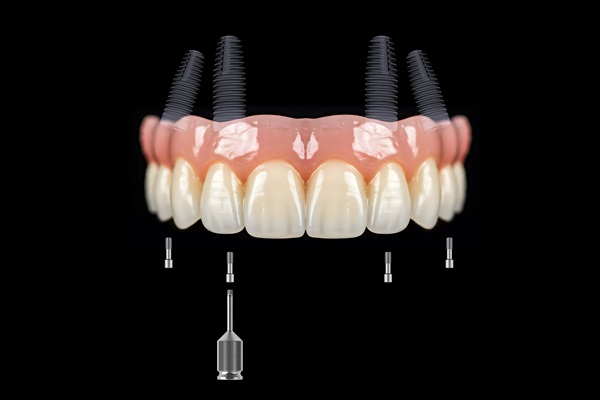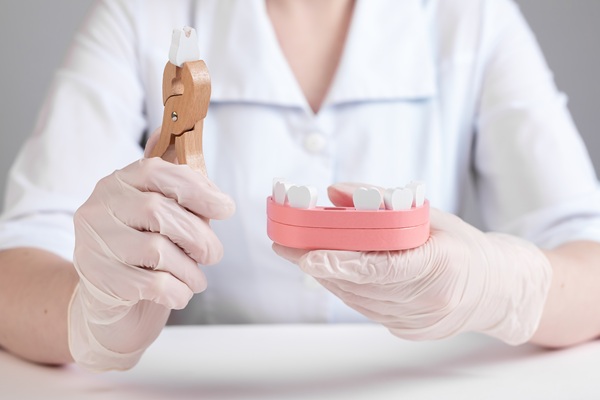Guided Implant Surgery Ann Arbor, MI
In recent years, guided implant surgery has dramatically changed how dental implants are performed. This technique allows an oral surgeon to make more precise, accurate movements throughout the implant process. It can also prolong the longevity of the implants for a more natural-looking smile and longer-lasting results.
At Great Lakes Oral Surgery, we offer guided implant surgery for patients interested in undergoing dental implantation. Our team can help assess your case and determine any necessary treatments before the implant procedure. To learn more about a procedure or schedule an appointment, call (734) 961-4864 today.
What are Dental Implants?
Dental implants are artificial titanium roots that support a dental prosthesis, such as a crown, bridge, or denture. The implant resembles a screw in both size and shape. Although dental implants refer to the implant themselves, the treatment typically describes the entire process, including the implant, an abutment (or connector piece), and the artificial tooth replacement.
Dental implants treat missing, damaged, or severely decayed teeth. Oral surgeons implant them into the jawbone where the tooth is missing or was removed. The implants bond with the natural bone around them through a process called osseointegration, becoming a permanent part of the mouth.
“Dental implants are artificial titanium roots that support a dental prosthesis, such as a crown, bridge, or denture.”
Understanding Guided Implant Surgery
Guided implant surgery is a new surgical technique that uses the patient’s dental cone beam computed tomography (CT) images combined with computer software to improve the effectiveness and overall result of the surgery. This contemporary technique blends acquired images with currently existing dentition and creates precise guides specific to implants. Guided implant surgery involves both the manufacture and placement of dental implants efficiently, precisely, and effectively.
Oral surgeons use 3-D images of the teeth, soft tissues, nerve pathways, and facial bones from the CT images and live imagery of these structures through the guided implant device to perform the implantation in more precise movements. The surgery is guided by advanced technology and custom-designed for each patient’s unique mouth and facial structures. Proper care and maintenance produce more accurate, natural-looking results that typically last for longer periods of time.
“The surgery is guided by advanced technology and custom-designed to each patient’s unique mouth and facial structures.”
Candidates of Guided Implant Surgery
Guided implant surgery is typically suitable for patients who qualify for dental implants. This includes patients who are missing a tooth or multiple teeth but are in good overall health to undergo an oral surgery procedure. A dental implant solution can restore a single tooth or all their teeth replaced. However, adequate jawbone mass is essential for effective and successful implant surgery.
In some cases, the patient may need a bone graft. Bone grafts provide a sufficient amount of bone material to secure the implant in place and allow for the process of osseointegration. Bone grafting typically uses bone material from the patient or a donor but may use synthetic bone if any natural bone is unavailable. Bone grafting is a separate procedure with its own process and recovery time. Upon completion of a bone graft, the oral surgeon can begin the dental implant process.
“Guided implant surgery is typically suitable for patients who qualify for dental implants.”
Check out what others are saying about our dental services on Yelp: Guided Implant Surgery in Ann Arbor, MI
Process of Guided Implant Surgery
The entire process of getting dental implants can take several months to over a year, depending on the complexity of the patient’s case. The oral surgeon will thoroughly examine the patient’s mouth to determine where implants are needed and whether any teeth need extraction. This exam may include radiographs (X-rays) or an in-office ConeBeam Ct Scan to obtain a complete picture of the teeth and jaw. We will then develop a custom treatment plan and discuss the patient’s options, including whether they require a bone graft.
On the day of the implant surgery, we administer an anesthetic to numb the patient throughout the procedure. The implant is placed using the guided technique, and osseointegration begins, which could take a few months. After the implant properly fuses to the jawbone, we will place an abutment connecting the implant to the artificial tooth prosthesis. The gums will take a few days or weeks to heal, after which we will take impressions of the top and bottom jaws and create a custom-made crown, bridge, or denture.
“Once the implant is properly fused to the jawbone, we will place an abutment connecting the implant to the artificial tooth prosthesis.”
Questions Answered on This Page
Q. What is guided implant surgery?
Q. Who is a candidate for guided implant surgery?
Q. What is the process of guided implant surgery?
Q. What is maintenance and recovery like after guided implant surgery?
People Also Ask
Q. What are the steps to the dental implant procedure?
Q. What are the advantages and disadvantages of the major multiple teeth replacement options?
Q. What do oral surgeons and dentists have in common?
Q. What happens during the dental implant procedure?
Maintenance and Recovery
Throughout the implant process, we will guide and instruct the patient on proper care and maintenance techniques for their implants. Proper care and maintenance can prolong implant longevity and prevent complications in the future. Just like natural teeth, dental implants require proper home care and routine visits to the dentist's office.
At home, brushing, flossing, using a water flosser, and other tools are important for daily cleaning around the dental implant and crown. Our oral surgeon will most likely recommend professional dental implant maintenance every three months to ensure proper health around the new implant-supported tooth, alternating between our team and a restorative or general dentist’s office. Patients experiencing any complications should immediately schedule an appointment to determine the cause and resolve the issue.
“Proper care and maintenance can prolong implant longevity and prevent complications in the future.”
Frequently Asked Questions
Q. What is guided implant surgery?
A. Guided implant surgery is a new technique in which an oral surgeon uses CT images and live computer software to help guide the surgery. This type of implant surgery is much more precise and effective.
Q. How long does recovery take after implant surgery?
A. The process of implant surgery may take several months from start to finish. However, the recovery period itself is quite short. Many patients are able to return to normal activities the same day or the next day with the use of over-the-counter pain relievers. Patients may need more recovery time during the other steps in the process prior to placing the final permanent crown.
Q. What is the process of receiving a dental implant?
A. Depending on whether a patient requires a bone graft, the process may take a few steps. Bone grafts are the first step. Once there is an adequate amount of bone in the jaw, we may begin the placement of the implant. The process of osseointegration takes a few months as the implant properly fuses to the jawbone. Afterward, we will place an abutment and allow the gums to heal. Finally, we can place the permanent prosthesis, such as a crown or denture.
Q. How does guided implant surgery differ from traditional implant surgery?
A. Guided implant surgery is more precise than conventional methods. It is particularly useful in complex cases as computer technology uses more accurate measurements for increased precision. Patients can choose to undergo guided surgery but need to find an oral surgeon who performs this type of procedure.
Q. How long do dental implants last?
A. With regular brushing and flossing, the dental implant screw itself can last a lifetime. Good oral hygiene involves receiving regular check-ups every six months and treating oral conditions as they arise. The prosthesis, however, usually lasts about 10 to 15 years before it may need a replacement due to wear and tear. This will depend on the patient’s care regimen and the quality of the material used.
Start Feeling Better – Visit Us Today
By visiting us as soon as possible, our team can help get you the professional treatment you need. Instead of waiting around and allowing the symptoms to get worse, we can provide you with treatment options.
Call Us Today
Guided implant surgery is available at our office in Ann Arbor. The Great Lakes Oral Surgery team looks forward to treating you and providing a comfortable and successful implant treatment. Call our office at 734-961-4864 to learn more or schedule a consultation.
Helpful Related Links
- American Dental Association (ADA). Glossary of Dental Clinical Terms. 2024
- American Academy of Cosmetic Dentistry® (AACD). Home Page. 2024
- American Academy of Maxillofacial Prosthetics. American Academy of Maxillofacial Prosthetics. 2024
- American Association of Oral and Maxillofacial Surgeons. American Association of Oral and Maxillofacial Surgeons. 2024
- American College of Oral and Maxillofacial Surgery. American College of Oral and Maxillofacial Surgery. 2024
- National Cancer Institute (NCI). National Cancer Institute (NCI). 2024
- WebMD. WebMD’s Oral Care Guide. 2024
About our business and website security
- Great Lakes Oral Surgery was established in 2024.
- We accept the following payment methods: American Express, Cash, Check, Discover, MasterCard, and Visa
- We serve patients from the following counties: Washtenaw County
- We serve patients from the following cities: Ann Arbor, Ypsilanti, Saline, Dexter, and Chelsea
- Norton Safe Web. View Details
- Trend Micro Site Safety Center. View Details
Back to top of Guided Implant Surgery










